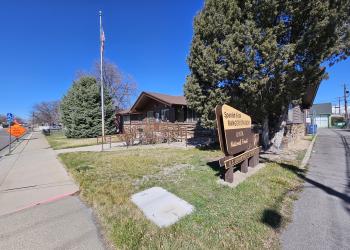Bald Mountain Pass and Overlook (Nebo Loop)
This is an observation site.
General Information
No fees are required for this site
Address: 44 West 400 North Spanish Fork, UT 84660
Phone: (801) 798-3571
Hours: Monday – Friday 8:00 am – 4:30 pm / Closed 1 hour for Lunch (Closed on federal holidays)
Office Email: sm.fs.uwc_info@usda.gov
Getting There
Latitude / Longitude
Latitude: 39.887431
Longitude: -111.692031
Directions
Nebo Loop-To access the south from Interstate 15 at Nephi, take Exit 225 to travel east on State Route 132. Five miles from the Interstate, look for a left turn (north) onto Forest Road 015, which is the Nebo Loop National Scenic Byway. Travel north on the byway, following the signs at junctions. The byway ends just outside Payson, from which you can access I15 again. To access the byway from the north, from Interstate 15 take Exit 248 in Payson, heading east on 800 South. Turn right onto 600 East, which becomes the Nebo Loop Road (FR 015) into the mountains.
Travel Considerations
Seasonal road. Closed to automobiles in winter.
Facility and Amenity Information
Restrooms
Restrooms are not available at this site.
Water
Potable water is not available at this site.
Recreation Opportunities
Viewing Scenery Info
Viewing Scenery
A large, faulted anticline makes up the Uinta Mountain Range and the Bald Mountain Pass and Overlook is one of a few great places to see the Uintah Mountains and all their geologic beauty. Driving to this overlook, one will see horizontal layers of Precambrian rocks, the Uinta Mountain group, as they show off their colors of green-gray shale and orange quartzite. At the overlook itself, some of the oldest known fossils, algae (known more specifically as stromatolites), have been found in the evenly bedded layers of light gray limestone. Look for bumps on the flat rock surfaces. These represent the fossil remains of these ancient algal structures. All around Bald Mountain remains the evidence of glacial activity. Glacial erratics, ground moraines, and an abundance of small lakes testify of an erosive ice age (Chronic, 1990).
Special Feature
Precambrian rocks and fossil remains of ancient algal structures



